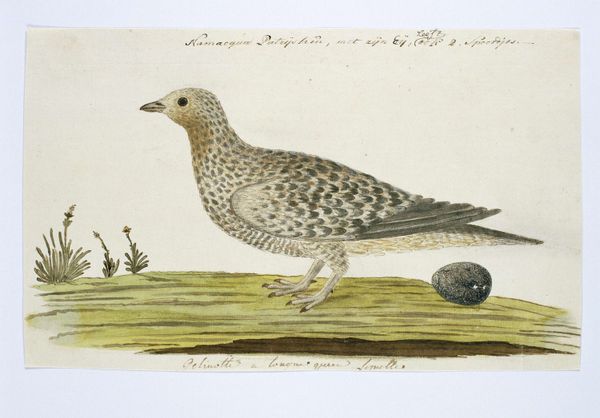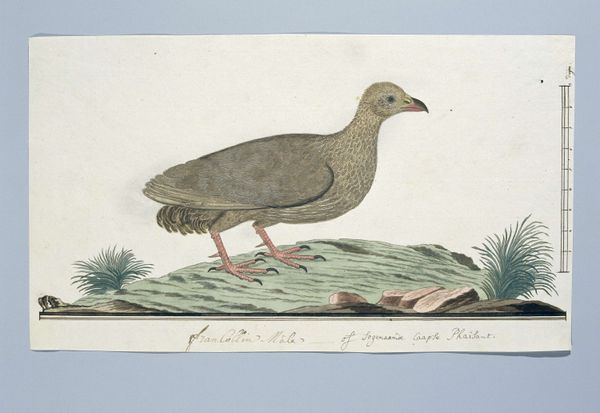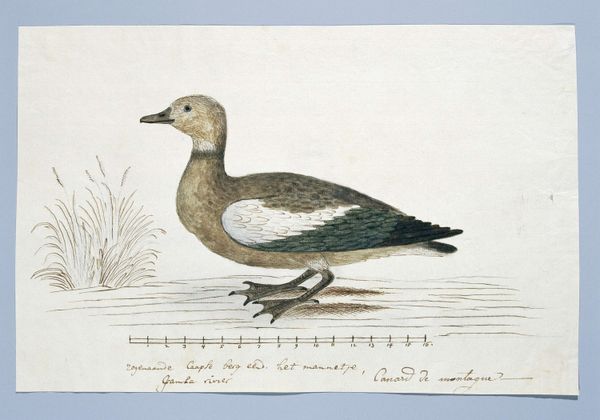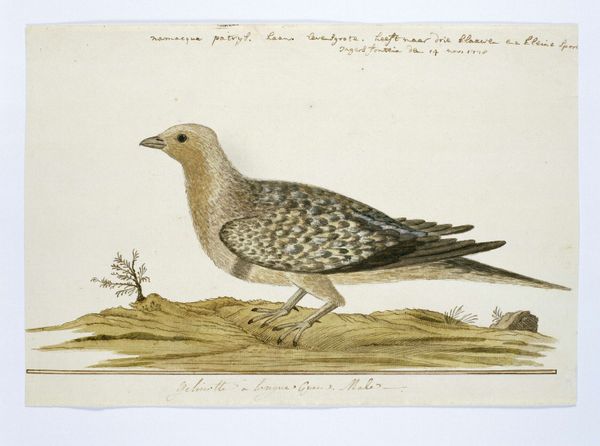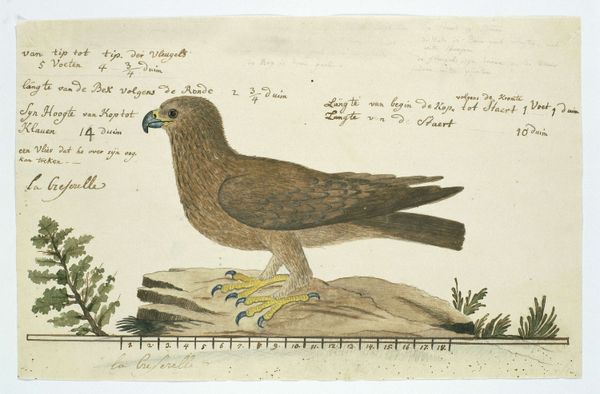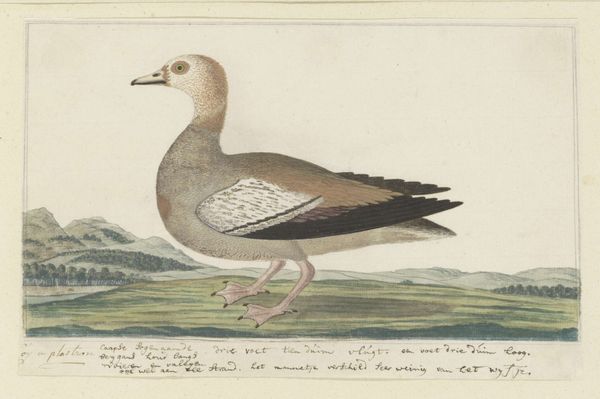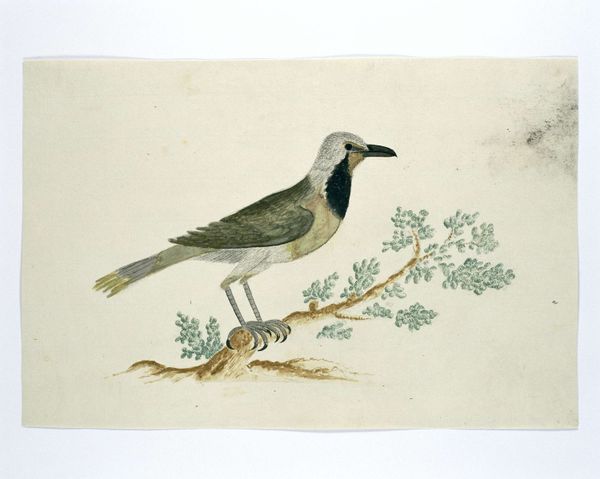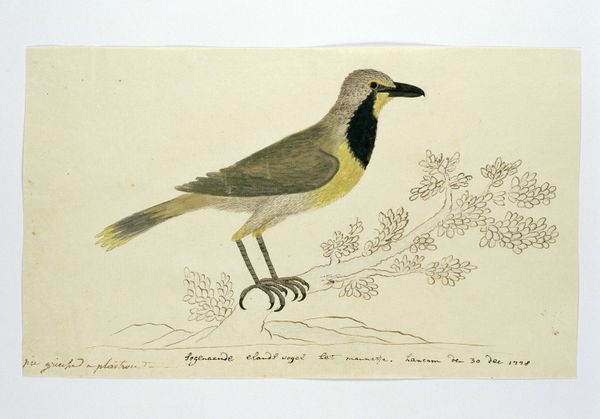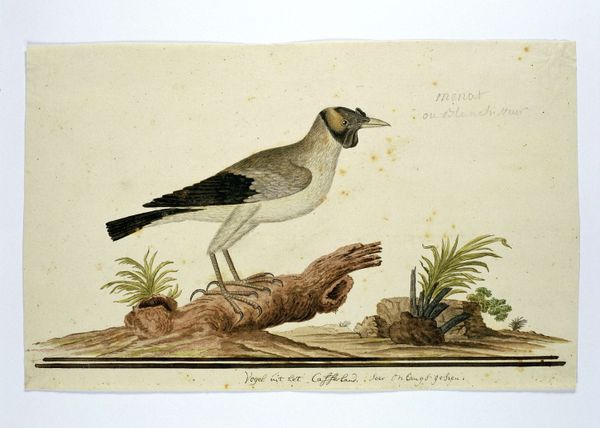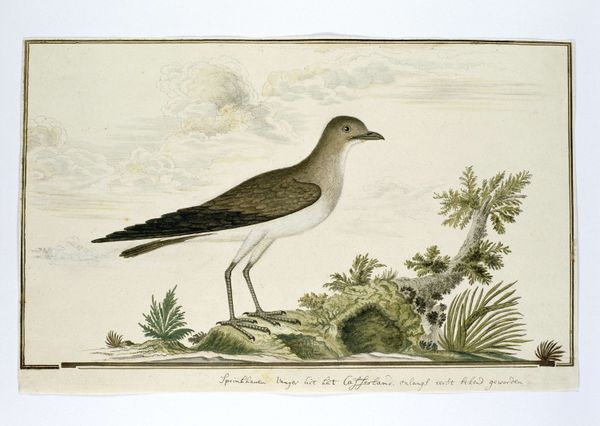
#
pastel soft colours
#
blue and white
#
pastel colours
#
soft and bright colour
#
watercolour bleed
#
watercolour illustration
#
yellow and blue
#
remaining negative space
#
watercolor
#
blue on white background
Dimensions: height 660 mm, width 480 mm, height 183 mm, width 266 mm, height mm, width mm
Copyright: Rijks Museum: Open Domain
Editor: This is Robert Jacob Gordon’s "Pteroclurus bicinctus (Double-banded sandgrouse)," created around 1778. It appears to be made with watercolors. I'm struck by the softness of the image and the almost clinical approach to rendering the bird. What strikes you about this piece? Curator: Well, let's think about the material conditions here. Watercolors, produced commercially from the mid-18th century, were vital to natural history illustration, particularly during the era of colonial expansion. What's implied when this specific medium and style are applied in the depiction of a bird from a distant territory? Editor: Perhaps the relatively easy transport and application of watercolors made it appealing for explorers documenting their findings? Curator: Precisely! It's about logistics, labor, and distribution. Consider also the social implications: who had access to these materials? Whose knowledge was privileged in the act of depicting and classifying nature? This seemingly simple image reflects a complex web of colonial enterprise, scientific ambition, and class structure. The image would only exist by obtaining its subject. How does knowing the process of documentation and production change our understanding of this artwork? Editor: That adds a layer of complexity. It’s not just a pretty picture of a bird; it represents the system that allowed the picture to be made, involving exploration, resource extraction, and a specific kind of scientific observation that often served colonial interests. Curator: Exactly. We see here a convergence of art, science, and economics, fundamentally shaped by the available tools and the prevailing social order. Consider the consumption of images like this in Europe – who would see them, and how did these images contribute to their understanding (or misunderstanding) of the world? Editor: I hadn’t considered how the means of production and dissemination shaped the meaning so much. It changes how I see the piece. Curator: Indeed, and focusing on the materiality invites us to interrogate art's broader cultural function.
Comments
No comments
Be the first to comment and join the conversation on the ultimate creative platform.

